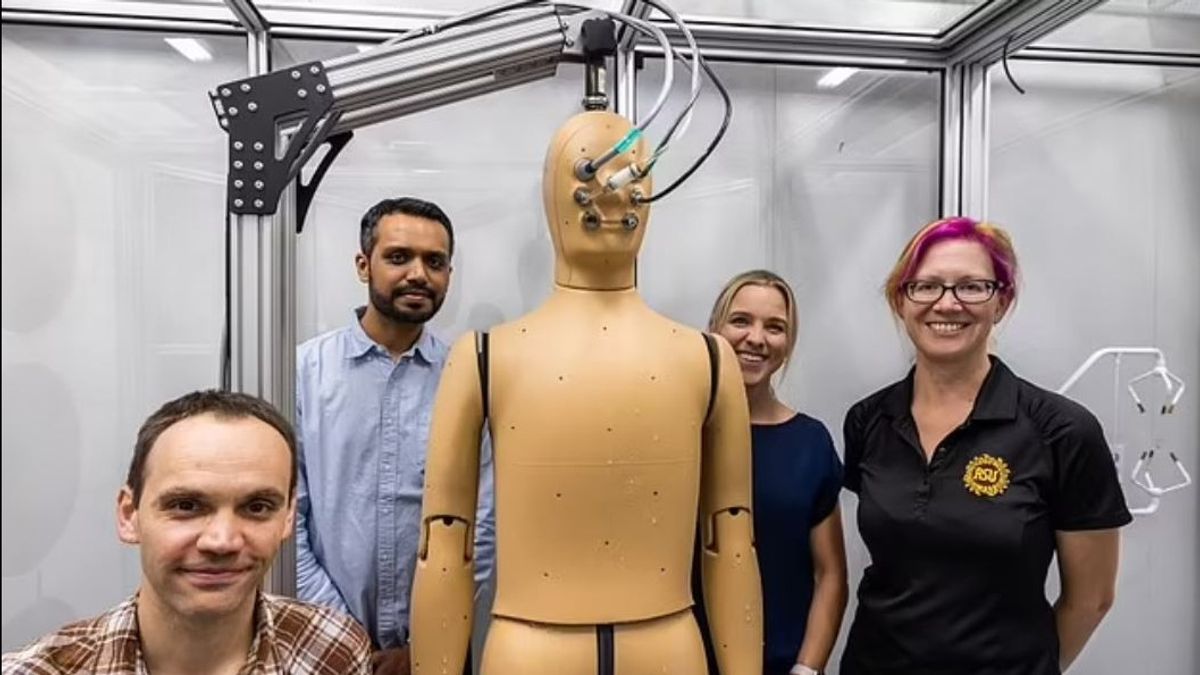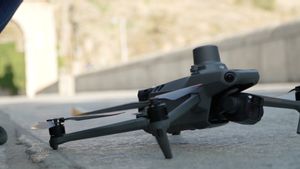JAKARTA - Manekin's first run in a world that produces heat, chills, walks, and breathes like humans can help scientists understand our body's resistance to devastating heat waves.
Scientists at the State University of Arizona (ASU) have redesigned the robot used by sportswear companies to mimic the thermal function of the human body.
This test robot named ANDI is equipped with synthetic pores to sweat artificially, temperature sensors, and hot fluxes in 35 different surface areas throughout the body of the mannequin.
With the new internal cooling channel, this upgraded ASU ANDI is the first thermal mannequin suitable for outdoor use. This means scientists can now face the "test details" of this climate change at extreme temperatures in the Arizona desert.
"You can't put humans in dangerous extreme heat situations and test what's going to happen," said atmospheric scientist Jenni Vanos, a professor of associations at the ASU Sustainability School.
"But there is a situation where we know people in this Valley died of fever, and we still don't fully understand what's going on. ANDI can help us understand it," Vanos said, quoted by MailOnline.
Across the United States, thousands of people die from heat stroke and heat-related disturbances every year, this number increases due to climate change.
In County Maricopa, Arizona alone, 425 people died from hot-related medical problems in 2022 - more than a hundred people more than the heat-related deaths reported in 2021.
ASU researchers hope to reduce this number by better understanding how people with different ages, body types, and medical conditions respond to extreme heat waves, prolonged sun exposure, and other harsh conditions.
However, doing so also faces some experimental challenges.
"You don't want to do much of this test with real people," Professor Konrad Rykaczewski at the State University of Arizona told Arizona Republic. "It's unethical and dangerous."
In the ASU, ANDI's laboratory work is not too different from some other sweaty ANDIs in well-known sports clothing manufacturer prototype stores. It's just a little more intense.
Placed in a heating room called "Hotroom", ANDI is subject to wind, solar radiation, and temperatures of up to 140 degrees Fahrenheit.
In an ASU experiment, ANDI was shown to sweat with an internal cooling channel designed specifically to drain cold water throughout his body, while simulating and recording human reactions to heat from complex environments.
ANDI sensors collect typical data on body-type reactions to solar radiation, infrared radiation rising from warm asphalt surfaces, and hot convection circulating in the air. Hopefully, the ASU team can investigate solutions to community development plans.
When the ASU team covers ANDI with a special cloth, the simulated sweat on the surface of this sensor-filled robot will absorb and cool its body, as if it were a real human being who was very uncomfortable with the heat in Arizona.
This summer, ANDI will partner with new partners: ASU biometeorological hot robot, MARTy, a group of complex heat sensors mounted on the park's stroller.
"MARTy can tell us how the environment built modifies the amount of heat that reaches the body," said Ariane Middel, an ASU researcher who focuses on climate-related urban planning and design issues. "But MaRTy doesn't know what's going on in the body."
"MARTy measures the environment," said Middel, "Then ANDI can tell us how the body can react."
ANDI and MARTY's first mission will take them around the ASU campus in Tempe, Arizona.
The duo will travel around the Phoenix metropolitan area to collect data on overheated and risky residential conditions, such as roads in a shady environment and an old, less ventilation car house with a damaged air conditioner.
ANDI comes to ASU specifically from its manufacturer, Thermetics, thanks to funding from the Leading Engineering for America's Property, Health, and Infrastructure (LEAP HI) program from the National Science Foundation.
The English, Chinese, Japanese, Arabic, and French versions are automatically generated by the AI. So there may still be inaccuracies in translating, please always see Indonesian as our main language. (system supported by DigitalSiber.id)













